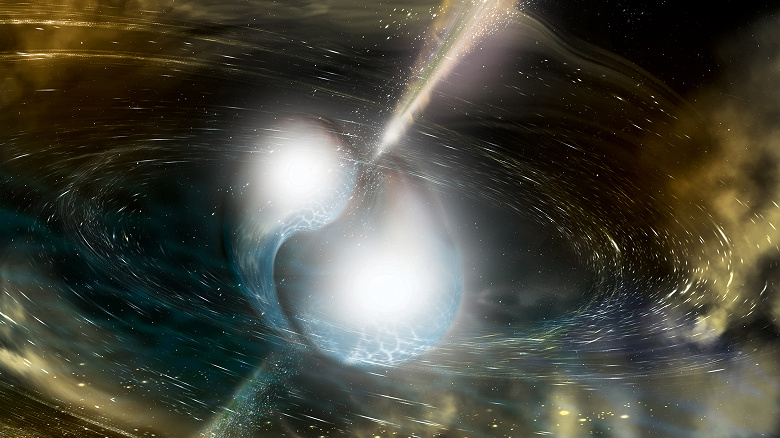Astrophysics is increasing the amount of knowledge about dark matter
August 17, 2017, the laser interferometric gravitational-wave observatory LIGO in the USA and the Virgo detector in Italy Virgo detected gravitational waves that were caused by the merger of two neutron stars. This event was observed both by gravitational detectors and by dozens of telescopes on Earth and in space.
This event, known as GW170817, inspired new research by McDonnell Space Science Center researcher Bhupal Dev, who analyzed observations to derive new constraints on axion-like particles. These hypothetical particles have not been directly observed, but they appear in many extensions of the standard model.
Axions — hypothetical particles that are prime candidates for making up dark matter. At the very least, these weakly interacting particles can serve as a kind of “portal” connecting the well-studied part of the Universe with the unknown.
According to Dave, the remnant from neutron star mergers creates ideal conditions for the formation of exotic particles, including axions: «The remnant becomes much hotter than the individual stars for about a second before collapsing into a larger neutron star or black hole, in depending on the initial mass». These new particles leave the fusion region and, far from their source, can decay into particles, usually photons.
As a result of the study, scientists discovered that escaping particles can generate unique electromagnetic signals that can be detected using gamma-ray telescopes such as NASA's Fermi-LAT. The research team analyzed the spectral and temporal information of these electromagnetic signals and were able to distinguish the signals from the astrophysical background. The scientists then used Fermi-LAT data from the GW170817 event to derive new constraints on axion-photon interactions as a function of axion mass. The results obtained complemented the limitations obtained as a result of laboratory experiments.
Future research could rely on gamma-ray telescopes such as Fermi-LAT or gamma-ray detection missions such as the Advanced Particle-Astrophysical Telescope (APT) to take measurements during neutron star mergers and improve understanding of axion-like particles. Extreme conditions provide new opportunities to search for “dark sector” particles, which could be critical to understanding the missing 85% of all matter in the Universe.

